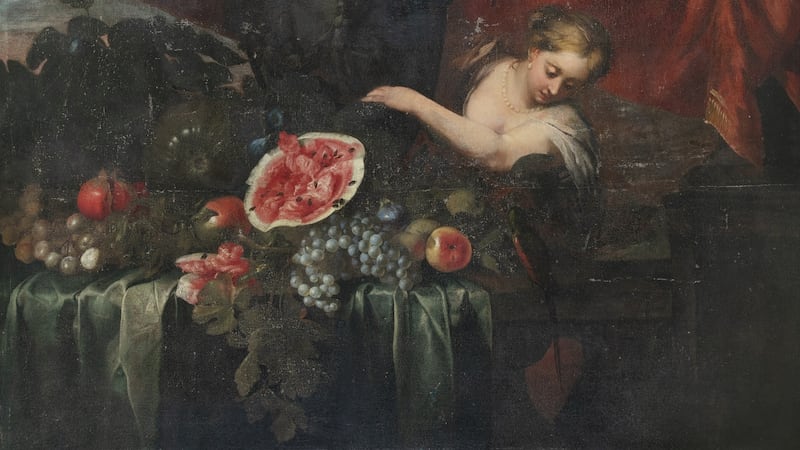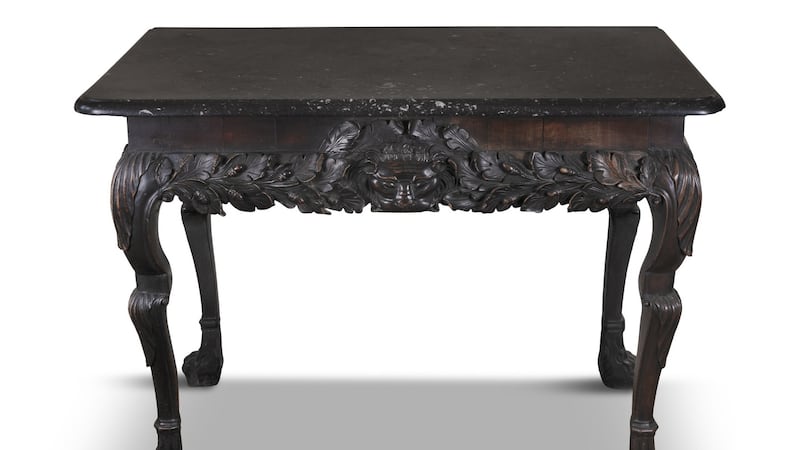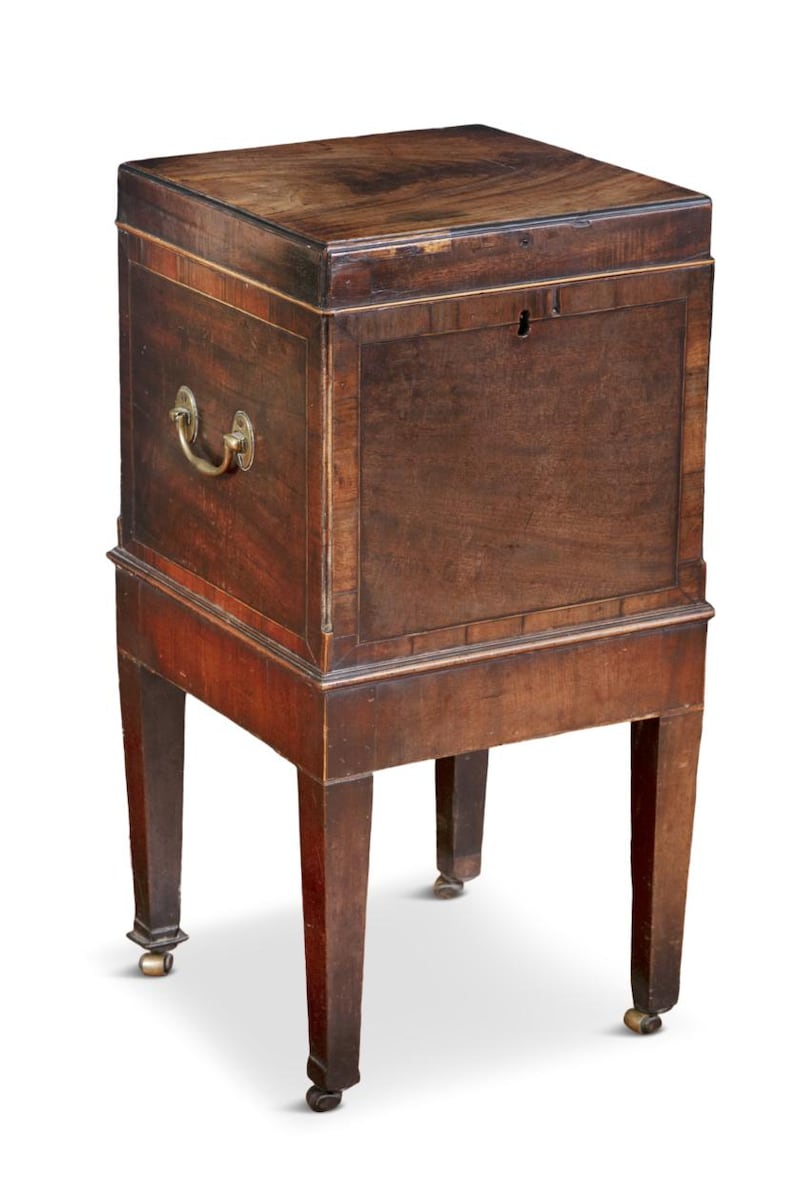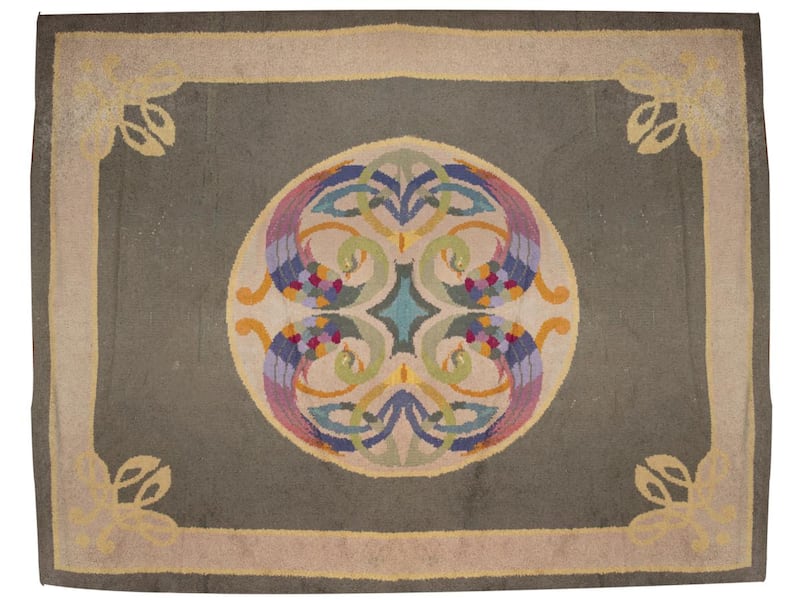The late Homan Potterton's contribution to the world of art, not just in Ireland, but also from his early tenure as assistant keeper at the National Gallery, London is well documented. His rich cultural legacy will now live on as proceeds from the forthcoming live online auction – Homan Potterton: A Lifetime of Collecting – at Adam's of St Stephen's Green on Tuesday September 7th, will go towards Irish charities.
"It is something we discussed a great deal, and we were lucky to be in the position that charities should benefit from his estate," says his partner of 41 years, Alex Heusen.
The Irish Architectural Archives, the Royal Hibernian Academy and others will benefit from the sale thanks to the generosity of Potterton and Heusen, who kept their relationship discreet for decades "as Ireland was a completely different place back then" and married in 2014.
His appointment as director of the National Gallery of Ireland in late 1979, when he was just 33 and the youngest to ever achieve the status, was preceded by a degree in the history of art from Trinity College Dublin. His memoirs, recorded in the bestselling and highly-praised book Rathcormick, relate his confession to opening a letter from the headmaster of his boarding school in Dublin to Trinity College which read: "He has a colourless personality, and he is unlikely to contribute anything to the university."



After his death from cancer in December 2020, his legacy might disagree. He published 12 books on diverse subjects including Venetian 17th-century paintings and the big house novel Knockfane, and his disciplined ambition also saw him instrumental in persuading Sir Alfred and Lady Beit to donate their outstanding collection to the gallery in 1986. It was at the time unprecedented, and included a first-rate Vermeer along with superb works by Goya, Velázquez and Gainsborough.
New York
After eight years as director at the National Gallery he resigned and settled with Heusen in New York, where he edited the Irish Arts Review, while writing memoirs and for Apollo Magazine.
“He felt the gallery was a death trap, the electrics hadn’t been touched since they were installed. There were only seven or eight professional staff to run a major European gallery and the pressure he was under was immense. The decision to leave was a difficult one, but Homan felt he just could not take it any further,” recalls Heusen of the protracted recession of the 1980s.
Highlights of the sale of almost 250 lots include an important 18th-century Irish walnut table from circa 1740 (lot 135, €40,000-€60,000). The piece, listed at number 65 in the Knight of Glin and James Peill's Irish Furniture, occupied pride of place in his Dublin home just below the Leo Whelan portrait of socialite Guendolen Wilkinson (lot 104, €15,000-€25,000).
“He bought that painting from an English dealer in New York,” explains Heusen, “and was very excited about it. He knew Whelan’s work and spotted that the mirror in the painting was Irish, and of course he knew about the Titania’s Palace connection.”



Sir Nevile Wilkinson designed two spectacular dolls' houses after his daughter Guendolen's musings that she had seen fairies in the family garden in Mount Merrion. The most famous, Titania's Palace, was built by renowned Dublin cabinet-maker James Hicks, and during a bidding war at auction in 1978 was sold to Legoland in Denmark, where it remains on display at Europe's best preserved Renaissance water castle, Egeskov on the island of Funen.
Old Masters
Along with a remarkable collection of watercolours by artist and sculptor Lucius Gahagan are his collection of Old Master paintings, which were purchased from dealers and auction houses in New York and London. From the days of Potterton driving around in his Morris Minor as a carefree lad in his early 20s is the mammoth Lady with Table Laden with Fruit, from the 17th century (lot 74, €8,000-€10,000).
“His cousin called the other day and recalled when Homan bought this at Dartfield House [the now equine museum outside Galway]”.
While there was a Potterton family connection to the Hardys, who lived there, “the real story was how Homan had the painting [which measures almost two metres in length] strapped to the roof of the car when it flew off on what is now the M4, and it was just luck that it survived and nothing drove over it,” recalls Heusen.
Potterton’s magical sense of humour is captured in Thomas Ryan’s Humorous Sketches of Homan Potterton (lots 102 and 103 €800-€1,200) and also in a quip to his husband two weeks before he died. After learning of the death of a good friend, but knowing his own time was nigh, Potterton, with a wide grin, replied: “Well, I wish he could have waited, as we could have shared that cab together.”
adams.ie


















